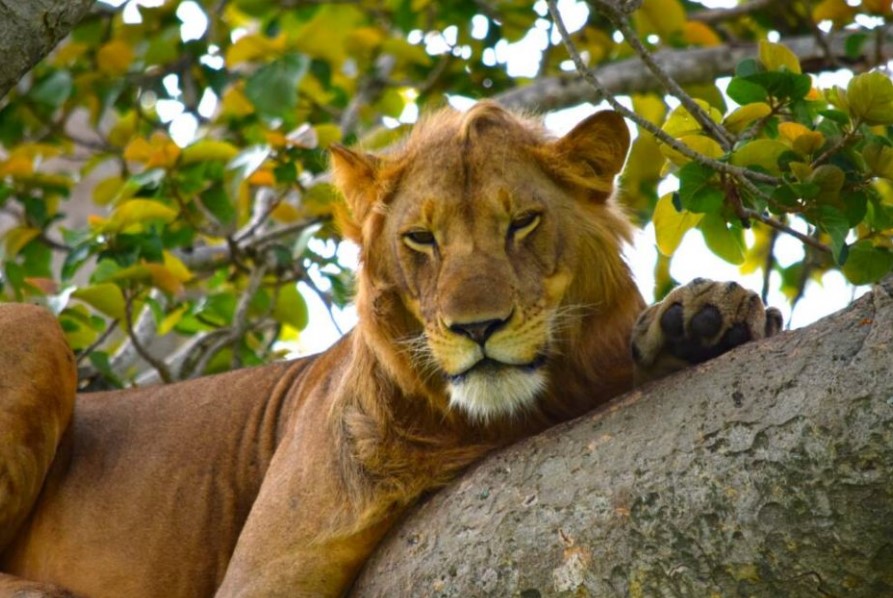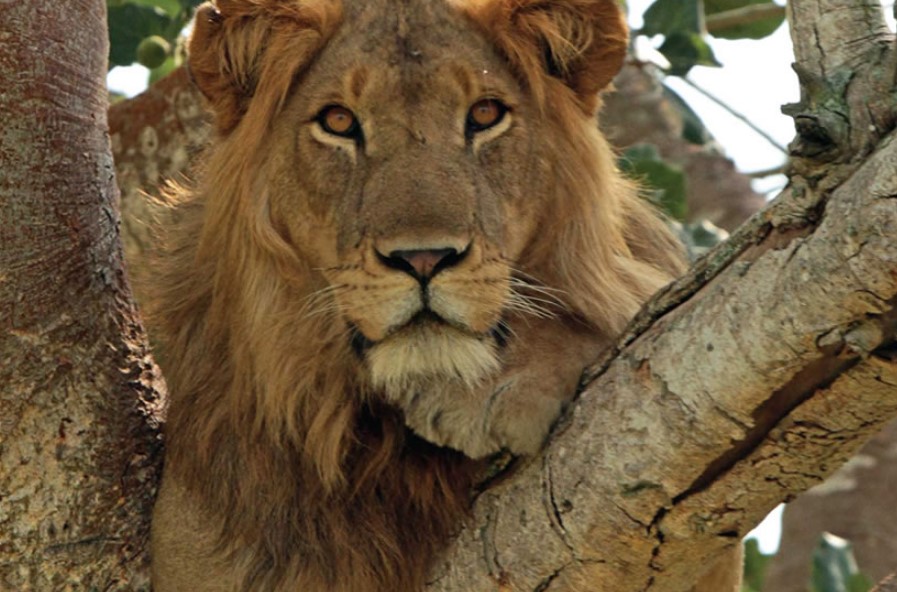The Ishasha sector is one of the most prominent tree-climbing lions in the whole of Uganda and it is located within the Queen Elizabeth National Park. The Ishasha sector is a one-of-a-kind area with the special appeal of tree-climbing lions. The broad savanna grasslands of the Ishasha area are dotted with acacia and fig trees with large branches that lions may use to hang out. The Ishasha sector can be traced in western Uganda in Uganda’s second most visited national park, Queen Elizabeth National Park. The Ishasha sector can be visited and it is popular for a unique sight that adds to the enjoyment and memory of your safari in Queen Elizabeth National Park.
There are different reasons as to why in Queen Elizabeth National Park the lions do climb trees, and one of the reasons is that the lions climb trees because they run away from the harsh climatic conditions of the safari as well as the small insects that can affect the young cubs. Also, tree-climbing lions do climb trees to ensure that they can see their prey easily, which is very interesting.
Additionally, the spectacular and unique Ishasha sector of Queen Elizabeth contains a diverse range of wildlife, such as antelopes, kobs, and a chance to see African elephants.
There are a lot of wildlife attractions in the Ishasha sector that you can easily see when you are easily found within the Ishasha sector. The notable wildlife species in the Ishasha sector include the Ishasha River, which you can walk along the banks of from your camp, and supports a thriving hippo population, which may be seen from Ishasha Wildness Camp. A diverse range of animals, such as bush-buck and black-and-white colobus monkeys, as well as a diverse range of birds, such as the black-bee-eater, broad-billed-roller, and the rare Cassin’s grey flycatcher, may be found in the riparian forest. Away from the river, light acacia forest and Savannah sustain big herds of Uganda kob, topi, buffalo, and white elephants, which are prevalent during certain seasons.

Our visitors moving to the Ishasha sector will move through various circuits, and there are two primary gaming circuits, the northern and southern loops, both of which are around 20 kilometers long. The northern circuit, which travels through the kob breeding areas on Lake Edward Flats, is considered the most fruitful for viewing lions, as lions in Kasenyi adhere to the kobs they prey on, and their presence is always indicated by the antelopes’ warning call. A 10-kilometer road leading north from this road loop goes to the marshy beaches of Lake Edward, where water birds like herons, storks, and plovers, as well as maybe shoebills, can be found.
When to travel to Ishasha for wildlife?
The Ishasha area is available to tourists all year, although the dry season, which runs from June to September and December to February, is better for continuous game drives due to the dryness of the roads. Because the grass is always short during the dry season, it is easier to identify lions in the region. Because the roads will be clearer, this is considered the best period for game drives. When visiting during the dry season, you’ll have a better chance of sighting animals because they’ll be looking for water and are more likely to concentrate around the few surviving watering holes. To avoid the heat, the lions are more likely to be in the trees.
Queen Elizabeth National Park is accessible from Kampala through Fort Portal. The journey from Kampala to the Ishasha sector takes around 9 hours, and the journey from Mweya Peninsular in Queen Elizabeth National Park to the Ishasha sector takes approximately 2 hours. Entebbe international airport and Kajjansi airstrip have regular flights for anyone who chooses to go by air. You will be taken to Queen Elizabeth National Park’s Kihihi or Mweya airstrips, where you will connect to the Ishasha plains via road for the final 2-hour drive. When planning a safari in Uganda, don’t forget to include the Ishasha region and the Queen Elizabeth National Park in general. Also, after a safari in Queen Elizabeth National Park, gorilla trekking in Bwindi Impenetrable National Park is an option.


Comment (0)